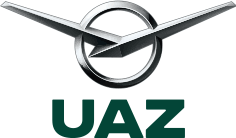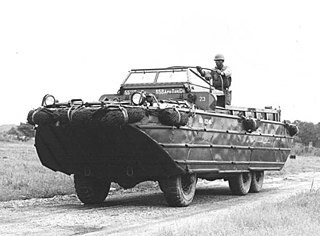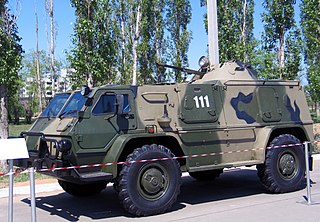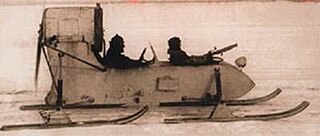| GAZ-46 MAV | |
|---|---|
A GAZ 46 at the Auto & Technik Museum Sinsheim, Germany (2009) | |
| Overview | |
| Manufacturer | GAZ (Gorky Automobile Plant) |
| Production | 1954-1958 [1] |
| Assembly | Russia |
| Body and chassis | |
| Class | 4x4 amphibious jeep |
| Body style | waterproofed hull |
| Layout | front engine, rear drive; part-time 4x4 |
| Platform | GAZ-69 |
| Related | Ford GPA, GAZ 69 |
| Powertrain | |
| Engine | 4 cyl petrol, 2112cc GAZ-69 55 hp @ 2800 rpm, 170 nm @ 1400 rpm |
| Transmission | 3-speed manual; 2-speed transfer case water: PTO propellor drive |
| Dimensions | |
| Wheelbase | 230 cm (91 inch) |
| Length | 507 cm (200 inch) |
| Width | 173,5 cm (68 inch) |
| Height | 179 cm (70 inch) |
| Curb weight | 1270 kg (GVW: 1770 kg) |
The GAZ-46, army designation MAV (Russian, малый автомобиль водоплавающий, small floating car), is a Russian-made light four-wheel drive amphibious military vehicle that entered service in the 1950s and has been used by many Eastern Bloc allied forces since. During the Second World War Canada, Britain and the US forwarded large quantities of military materials to Russia. Among those were jeeps, trucks, and amphibious vehicles like the 6x6 DUKW and the 4x4 Ford GPA. The latter were used to help men and equipment get across the many rivers of Eastern Europe and combat the Germans. Seeing merits of such vehicles, after the war, Russia decided to develop two similar vehicles, using domestic automotive parts, the BAV, an equivalent of the DUKW, and the MAV, an equivalent of the Ford GPA.

Four-wheel drive, also called 4×4 or 4WD, refers to a two-axled vehicle drivetrain capable of providing torque to all of its wheels simultaneously. It may be full-time or on-demand, and is typically linked via a transfer case providing an additional output drive-shaft and, in many instances, additional gear ranges.
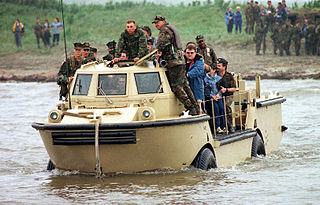
An amphibious vehicle, is a vehicle that is a means of transport, viable on land as well as on water. Amphibious vehicles include amphibious bicycles, ATVs, cars, buses, trucks, military vehicles, boats and hovercraft.

The Eastern Bloc was the group of Communist states of Central and Eastern Europe, East Asia and Southeast Asia under the hegemony of the Soviet Union (USSR) during the Cold War (1947–1991) in opposition to the non-Communist Western Bloc. Generally, in Western Europe the term Eastern Bloc comprised the USSR and its East European satellite-states in the Council for Mutual Economic Assistance (Comecon); in Asia, the Socialist bloc comprised the Socialist Republic of Vietnam, the Lao People's Democratic Republic and the People's Republic of Kampuchea; the Democratic People's Republic of Korea and the People's Republic of China ; and in the Americas, the Communist Bloc included the Caribbean Republic of Cuba, since 1961.
Contents
Due to bad reception of the Ford GPA 'Seep' by Allied soldiers, most of them were routed to Russia under the US Lend-Lease program, before production was halted prematurely in 1943. The research institute NAMI developed a prototype NAMI-011, basing on GAZ-67B parts, in 1949. [1] The authorities decided, that it should be manufactured in GAZ works, as GAZ-011, but the factory was reluctant, because a design needed much perfecting, while the GAZ-67B was obsolete and due to be replaced with GAZ-69. [1]

The Ford GPA 'Seep' was an amphibious version of the WWII Ford GPW Jeep. Unlike the jeep, the seep was not a successful design; it was considered too slow and heavy on land, and lacked sufficient seagoing abilities in open water. The design features of the much larger and more successful DUKW amphibious truck were used on the GPA.
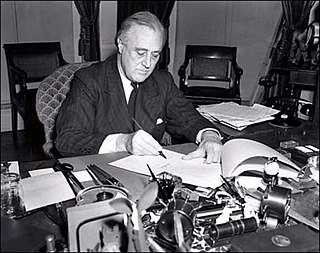
The Lend-Lease policy, formally titled An Act to Promote the Defense of the United States, was an American program to defeat Germany, Japan and Italy by distributing food, oil, and materiel between 1941 and August 1945. The aid went to the United Kingdom, China, and later the Soviet Union, Free France, and other Allied nations. It included warships and warplanes, along with other weaponry. The policy was signed into law on March 11, 1941, and ended overnight without prior warning when the war against Japan ended. The aid was free for all countries, although goods in transit when the program ended were charged for. Some transport ships were returned to the US after the war, but practically all the items sent out were used up or worthless in peacetime. In Reverse Lend Lease, the U.S. was given no-cost leases on army and naval bases in Allied territory during the war, as well as local supplies.

The GAZ-67 and the subsequent GAZ-67B were general purpose four wheel drive Soviet military vehicles built by GAZ starting in 1943. By the end of the war, it was the Soviet equivalent of the Willys Jeep.
As a result, an improved model GAZ-46 was built using the frame and parts of the GAZ-69 4x4 half-ton light truck, of which production started with the Gorki factory of 1952. The principal functions of the GAZ-46 MAV were to make light work of crossing lakes and rivers for men and materials, as well as performing river reconnaissance. As of the end of the fifties the latter role became reserved for the BRDM-1, a much more powerful 4x4 amphibious vehicle.
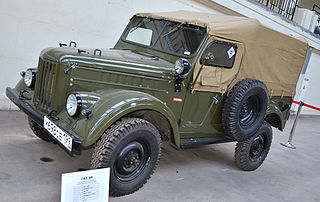
The GAZ-69 is a four-wheel drive light truck, produced by GAZ between 1953 and 1956 and then by UAZ, in 1956–1972, though all of these vehicles were known as GAZ-69s.

The BRDM-1 is a Soviet amphibious armored scout car. It was the first purpose-built Soviet reconnaissance vehicle to enter service since the BA-64 and was built on the chassis and drive train of the BTR-40 armored personnel carrier.
The GAZ-46 MAV used the mechanics of existing Russian GAZ 4x4 "jeeps" as well as being created somewhat bigger for better buoyancy, and its design is heavily inspired by that of the wartime Ford GPA. Just like the 'Seep', its hull is entirely out of steel, welded to a steel chassis. The layout is the same: engine compartment in the front, crew compartment in the center, and the spare wheel horizontally mounted on the rear deck. The driver and the commander of the vehicle have individual seats in the front with a three-seat bench behind them. The windshield can be folded down, and if necessary, a cover can be installed to close the cockpit. The engine is coupled to a manual three-speed gearbox and a two-speed transfer-case. Also, there is a screw-propellor for in the water propulsion, driven by a power take-off, and a proper rudder provides good maneuverability. Front and rear suspension is in the form of leaf-sprung rigid live axles. Thanks to its steeply raked front and rear and four-wheel drive, the GAZ can manage reasonably steep river banks before swimming across.

Buoyancy or upthrust, is an upward force exerted by a fluid that opposes the weight of an immersed object. In a column of fluid, pressure increases with depth as a result of the weight of the overlying fluid. Thus the pressure at the bottom of a column of fluid is greater than at the top of the column. Similarly, the pressure at the bottom of an object submerged in a fluid is greater than at the top of the object. The pressure difference results in a net upward force on the object. The magnitude of the force is proportional to the pressure difference, and is equivalent to the weight of the fluid that would otherwise occupy the volume of the object, i.e. the displaced fluid.
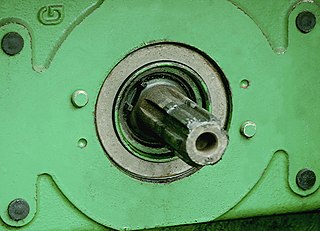
A power take-off or power takeoff (PTO) is any of several methods for taking power from a power source, such as a running engine, and transmitting it to an application such as an attached implement or separate machines.



